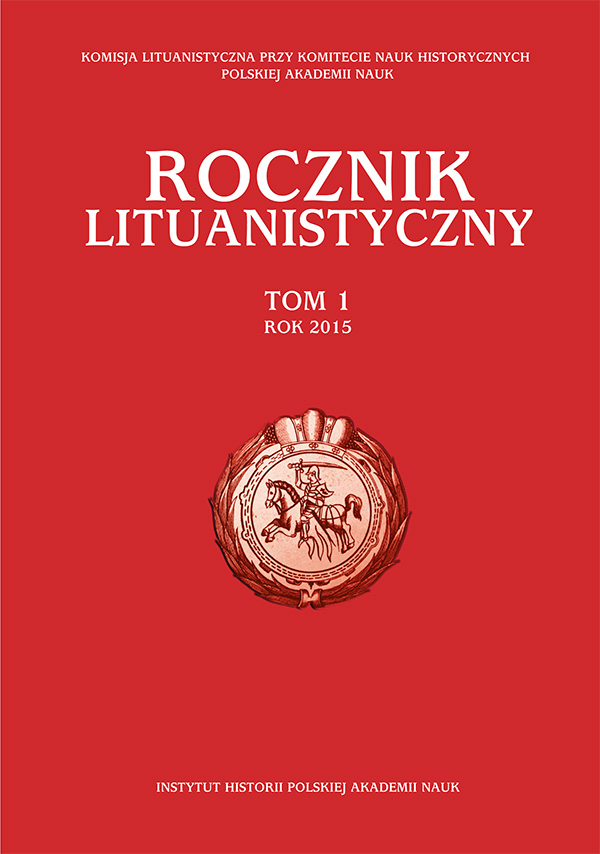Działalność paramilitarnych band rozbójniczych na pograniczu krzyżacko-litewskim w XIV wieku
Brigandage and brigands along the Lithuanian-Prussian-Livonian frontier in the fourteenth century
Author(s): Darius BaronasSubject(s): Military history, International relations/trade, 13th to 14th Centuries, Peace and Conflict Studies
Published by: Instytut Historii im. Tadeusza Manteuffla Polskiej Akademii Nauk
Keywords: Lithuania; Teutonic Order; Prussia; Livonia; brigandage; bands of brigands; frontier; international treaties;
Summary/Abstract: The aim of this study is to characterise the phenomenon of the bands of brigands (latrunculi, Struter) that were active in the Prussian and Livonian lands of the Teutonic Order and in pagan Lithuania. Although the brigands in this region may be regarded as a phenomenon inherited from tribal society, they continued to live, and even prosper, at the time when state-like structures came into being in the region under consideration. Such a situation was mainly conditioned by a stalemate in the war of the Teutonic Order against pagan Lithuania. The Prussian and Livonian brigands were useful for the Order in their subversive actions against the people living in Lithuania, and so, accordingly, were Lithuanian brigands for the grand dukes of Lithuania. The Teutonic Order and the grand dukes of Lithuania alike had only limited capabilities of interfering with the activities of “their” brigands. This is evident from international treaties in which the activities of brigands of both parties are addressed and some stipulations for their containment are provided (as in Lithuanian-Livonian accords of 1323, 1338, 1367). The grand ducal authority and the brigands coexisted on the mutual respect of each other’s rights. Neither side was willing, nor able to undo the other once and for all. One must also bear in mind that the strict lines of delimitation between brigands and warriors were then non-existent. So it comes as no surprise that certain commanders of the Teutonic Order cultivated the methods of brigandage with ambushes. Although the evidence is rather scantier on the Lithuanian part, it is clear that some Lithuanian dukes and warriors practiced this style of warfare too. Although this kind of martial activities was widespread in other parts of Europe as well, the peculiarity of brigandage between the Teutonic Order and Lithuania is to be seen in their attempts to regulate the behaviour of their brigands by treaties. This implies that both sides tended to regard the brigands as something normal and, in a sense, legal. On either side of the frontier there were quite a lot of people who were engaged in this kind of warfare and lived off the neighbouring land’s resources. Consequently they were not interested in a long-term peace and this partly explains why the war between the Teutonic Order and Lithuania was so prolonged.
Journal: Rocznik Lituanistyczny
- Issue Year: 2015
- Issue No: 1
- Page Range: 7-17
- Page Count: 11
- Language: Polish

